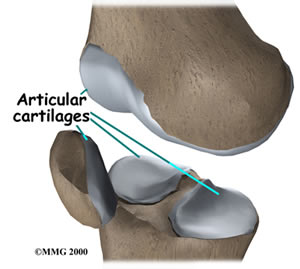Difference between Bone and Cartilage
Key Difference: The main difference between bone and cartilage is that bone is a hard and rigid tissue, whereas the cartilage is a soft, elastic and flexible tissue. The cartilage is present in the ears, nose, and joints of the body, whereas bones make up the skeletal system of the body.

The human is a complex being, which consists of a complex skeletal system that includes bone and cartilage among various others. Bone is the basis of the skeletal system; however, others like the cartilage also serve an important function, without which the skeletal system will not last very long.
The main difference between bone and cartilage is that bone is a hard and rigid tissue, whereas the cartilage is a soft, elastic and flexible tissue. The cartilage is present in the ears, nose, and joints of the body. In the joints, the cartilage covers the ends of the bones and acts as a shock absorber to prevent bones from rubbing against each other.
The bones serve a variety of major functions in the human body, which includes giving the body form; without bone our bodies would be jelly-like. Bones also help us avoid mechanical injury or damage. They also give the body the ability to move and function, as well as acting as a surface for the muscles and tendons to attach.

Bones also contain bone marrow where red blood cells and while blood cells are produced. In addition, bones also act to protect the organs such as heart, brain, lungs, and many more.
However, as bones are rigid they have the tendency of rubbing against each other, which causes the bones to erode. This is where the cartilage comes in. The cartilage acts as insulation for the bones which prevents the bones from rubbing against each other and eroding.
Comparison between Bone and Cartilage:
|
|
Bone |
Cartilage |
|
Description |
A bone is a rigid organ that forms part of the vertebral skeleton. |
Cartilage is a flexible connective tissue that stops the bone from rubbing against each other. |
|
Types |
Bones are of two types: compact or spongy. They are also classified into long, short, flat, irregular, sesamoid and sutural bones. |
Hyaline cartilage, fibrocartilage and elastic cartilage. |
|
Function |
Protect the body against mechanical damage, assist in the movement of the body, provide a framework and shape for the body, store minerals, and produce red blood and white blood cells. |
Reducing friction at joints, supporting the respiratory tract, acting as shock absorbers between weight-bearing bones, and maintaining the shape and flexibility of fleshy appendages. |
|
Structure |
Bones are made up mostly of osteoblasts (progenitor cells), osteocytes (mature bone cells), and osteoclasts (large cells that breakdown bone tissue for growth and repair). |
Cartilages comprise chondroblasts, (precursor cells), chondrocytes, and a dense matrix of collagen and elastic fibers, in which the mature chondrocytes are embedded. |
|
Location |
Bones make up the majority of the axial and appendicular skeleton. |
Cartilage is a much softer, more pliable component that is mostly found in between the joints of the bones, the rib cage, the ear, the nose, the bronchial tubes and the intervertebral discs. |
|
Characteristics |
Hard, inelastic and tough. |
Soft, elastic and flexible. |
|
Bone cells are known as osteocytes |
Cartilage cells are known as chondrocytes |
|
|
Has a vascular matrix, i.e. has blood vessels |
Has a non-vascular matrix, i.e. does not have blood vessels |
|
|
The matrix occurs in the lamellae |
The matrix is a homogenous mass without lamellae |
|
|
Matrix has a protein called ossein |
Matrix has a protein called chondrin |
|
|
The matrix is both organic and inorganic |
The matrix is completely organic |
|
|
The matrix has calcium salts, specifically calcium phosphates |
The matrix may or may not have calcium salts |
|
|
The bones have a rich blood supply |
Each cartilage lacks blood supply except in perichondrium |
|
|
Growth pattern of the bone is bidirectional |
Growth pattern of the cartilage is unidirectional |
|
|
Osteocytes have filopodia |
Chondrocytes lack protoplasmic process |
|
|
Lacunae gives off canaliculi |
Lacunae lack canaliculi |
|
|
Each lacunae has only one osteocytes (bone cell) |
Each lacunae has 2-3 chondrocytes |
|
|
Bone marrow is present and actually helps create blood cells |
No bone marrow or similar structure |
|
|
Haversian systems and Volkman’s canals are present |
No Haversian systems or Volkman’s canals |
Image Courtesy: oum.ox.ac.uk, eorthopod.com









Add new comment